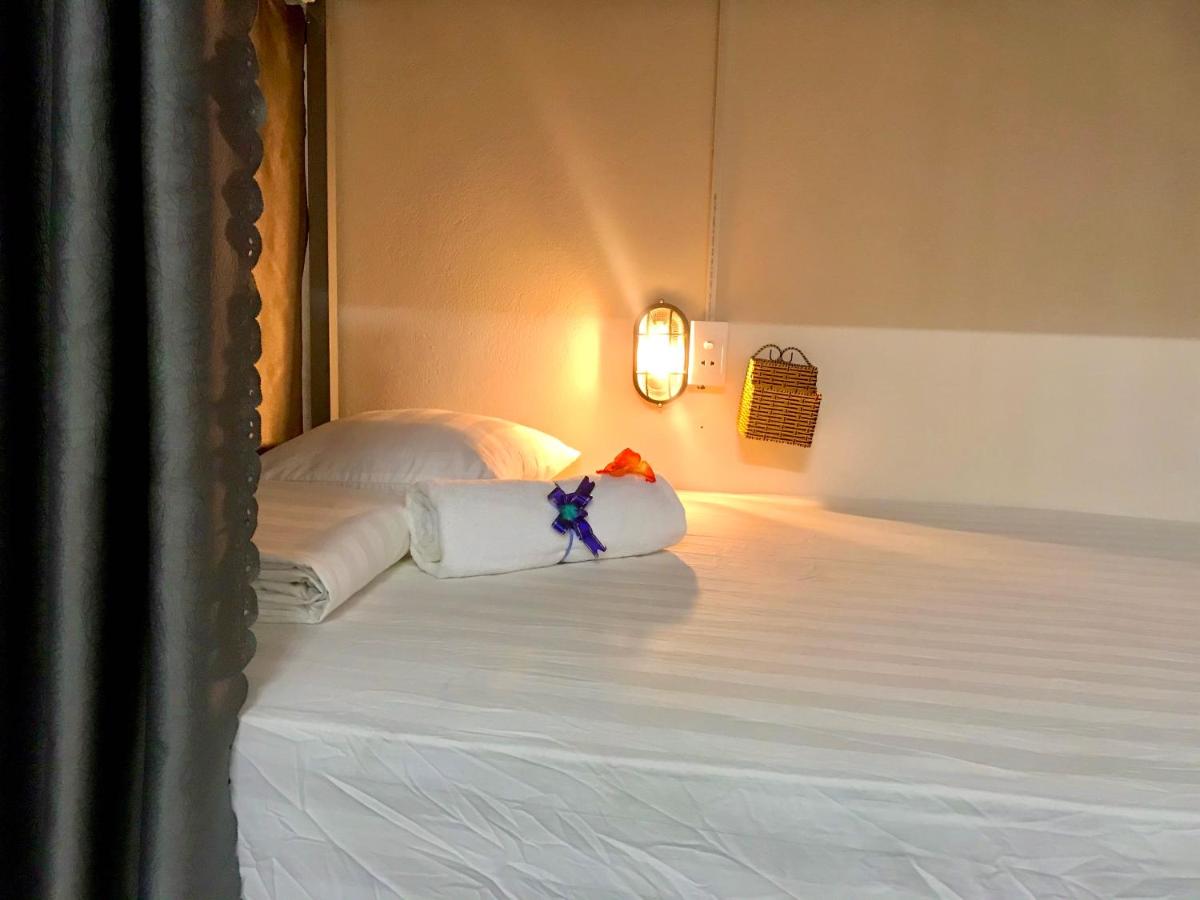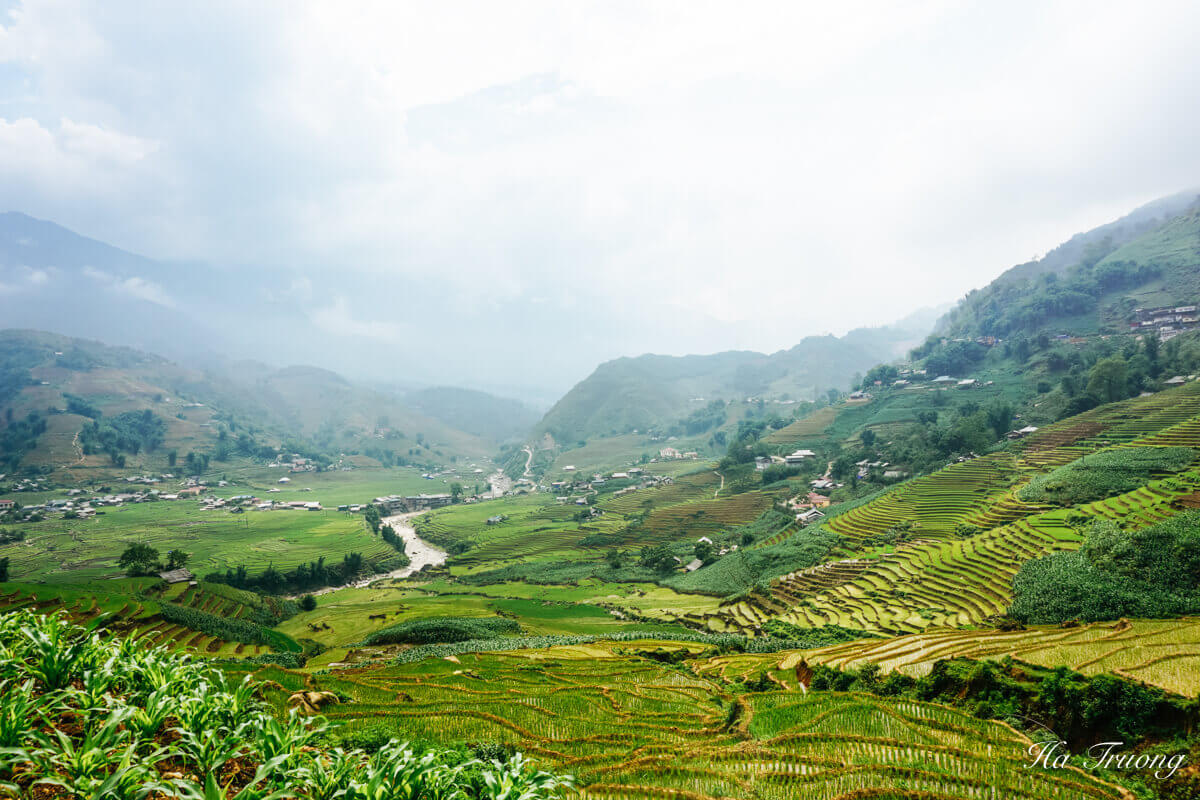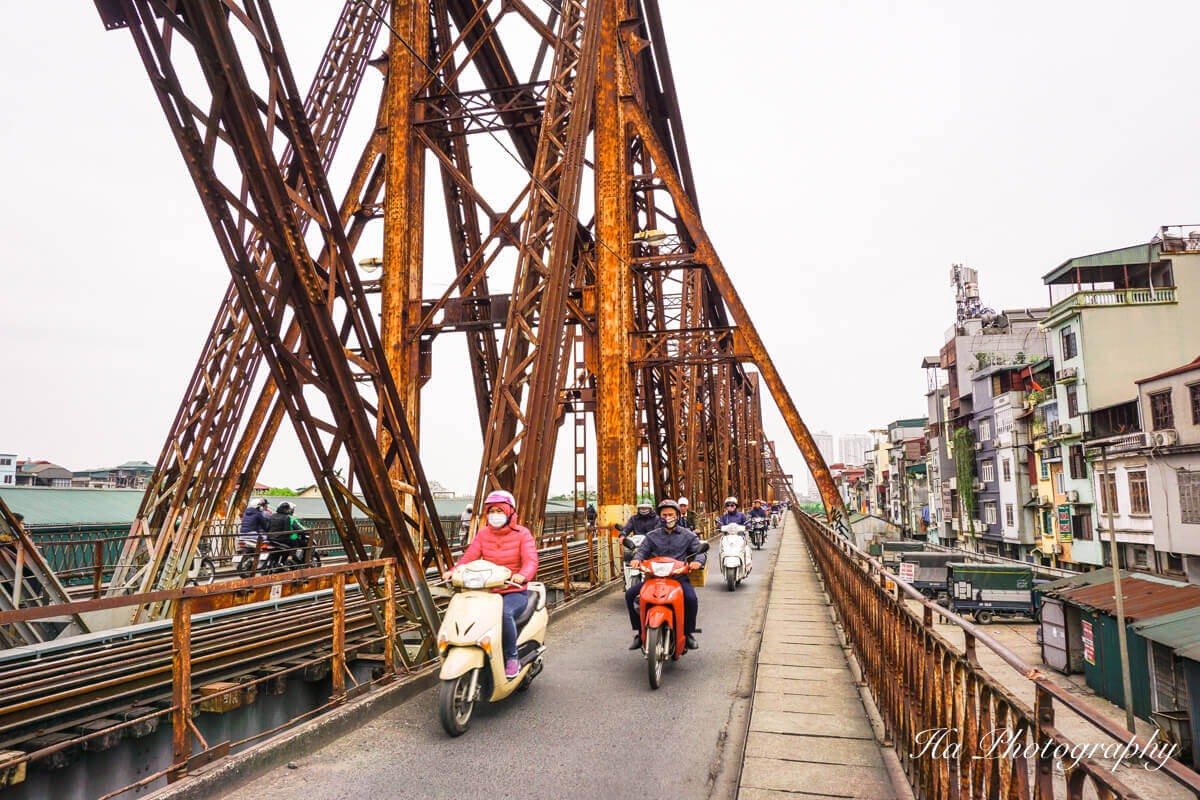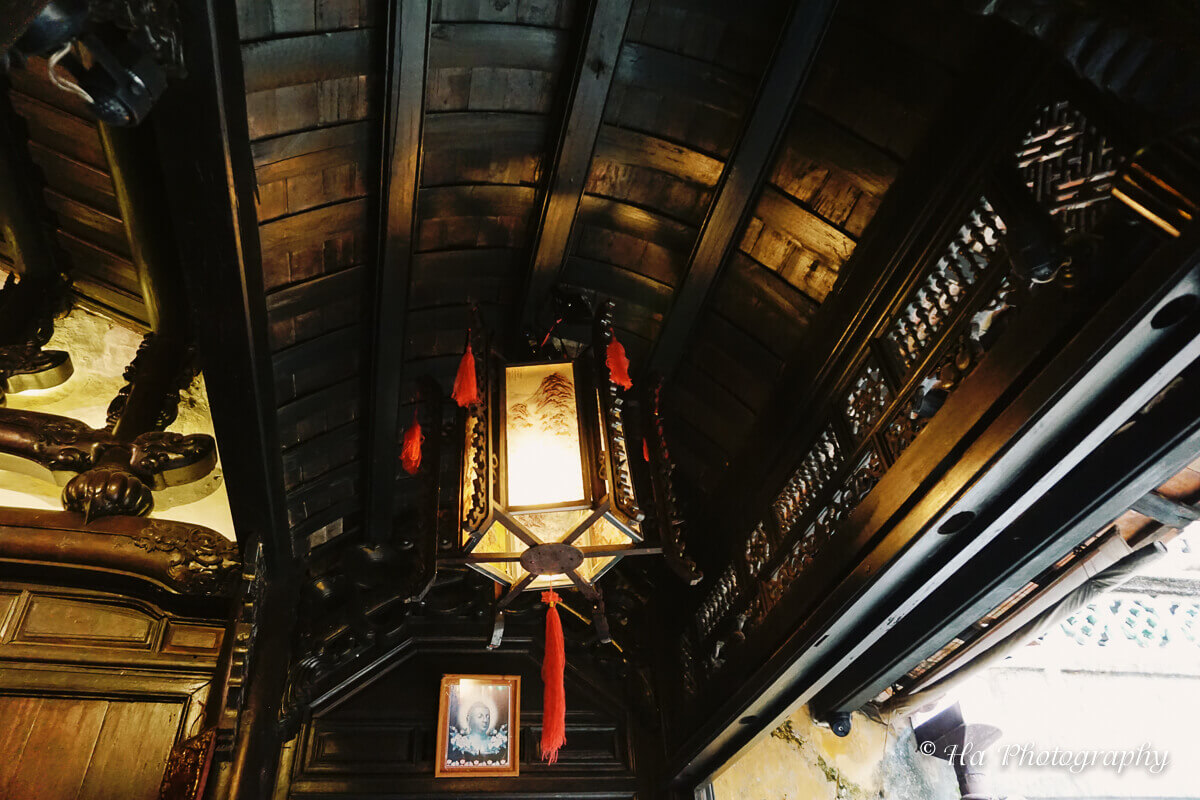Guide To Linh Phuoc Pagoda Da Lat Vietnam
Linh Phuoc Pagoda in Da Lat is one of the most impressive architectural works we’ve ever visited in Vietnam.
The pagoda is also known as the “Bottle pagoda,” thanks to its mosaic design with millions of bottles, broken dishes, and colorful pottery pieces.

About Linh Phuoc pagoda Vietnam
Linh Phuoc Pagoda, known as Ve Chai Pagoda, was built in 1949 and completed in 1953. In 1990, it was renovated on a larger scale with thousands of porcelain bottles.
From 1990 to the present, Linh Phuoc Pagoda has been continuously added new constructions with a unique design.

The temple campus is quite large with different areas such as the main hall, the Buddha statue with flowers, the wood display area, and 18 floors of Hell.
With unique constructions, Linh Phuoc Pagoda currently has 11 records, such as
- The tallest bell tower in Vietnam (36 m)
- Bodhisattva Avalokitesvara statue made of 600,000 immortal flowers
- The largest 18 levels of hell in Vietnam (the tunnel length of about 300 m)

Things to see at Linh Phuoc pagoda
Main hall
The temple’s main hall is a sacred place built with the help of artisans, Buddhists, and monks.
It’s 33 meters long and 12 meters wide, and there are two rows of crockery inlaid dragon pillars.

The dragon
The most impressive work in Linh Phuoc Pagoda is probably Long Hoa Vien, where the dragon symbol is carved into the shape of a 49m long winding around Maitreya Buddha.
This dragon is decorated with tens of thousands of bottles with a Buddha statue of Amitabha sitting on the top.
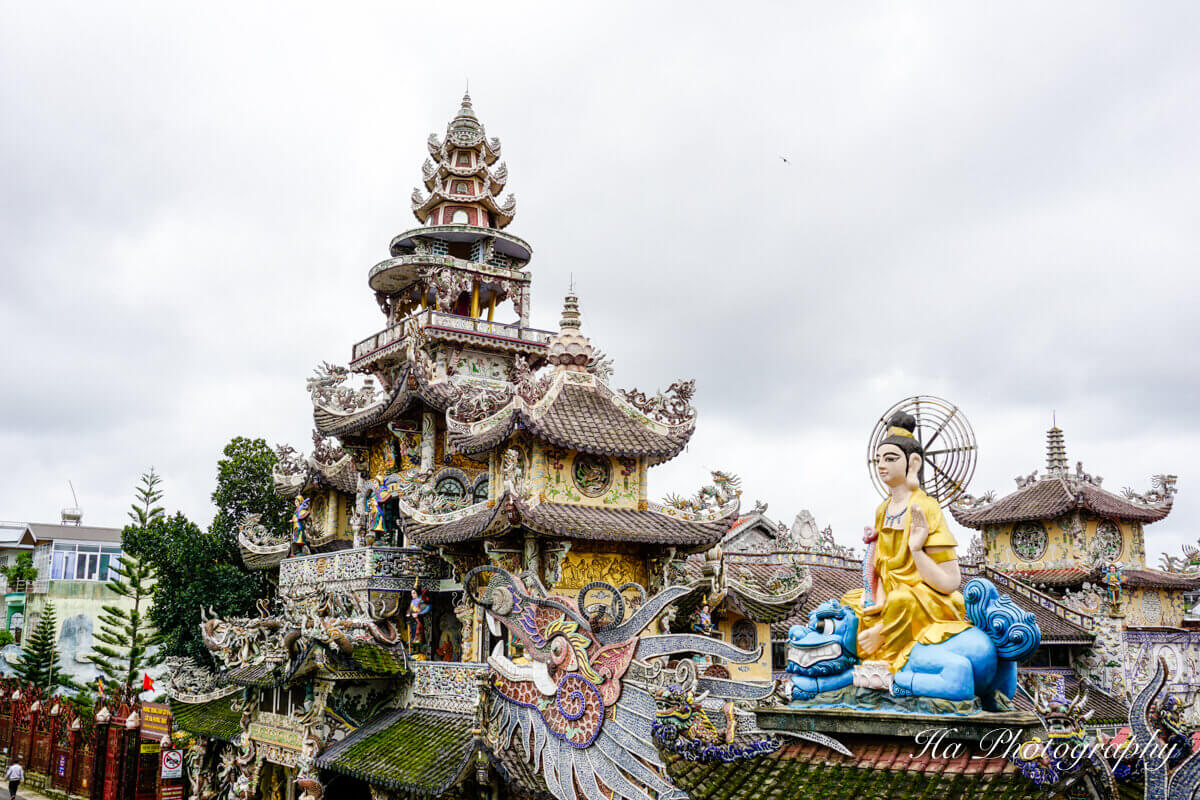
Near the main hall, we also found an interesting dragon statue.
The tower
This 7-story tower has about 37m and is considered the tallest bell tower in Vietnam today.

On the second floor of the tower, you can find the largest bell in Central Vietnam, named Dai Hong Chung.
It was cast in 1999 with a height of 4.3m, a diameter of about 2.3m, weighing up to 8.5 tons, and two tall guardian statues on either side.
Many visitors record their wishes and prayers on paper and stick them on the bell. They will then ring the bell with the belief that their prayers will come true.

Bodhisattva Avalokitesvara statue
This giant 18m-high statue is made up of 650 million immortal flowers, which is equivalent to a mass of 1,630 kg of flowers. We read that the flowers are replaced every two years.

The shrine
The shrine is a solemn architectural space and consists of three floors.
Entering the shrine, we were amazed by the statue of Bodhisattva Avalokitesvara. It has a height of 17m in concrete and is inlaid with gold.
In addition to the Buddha statue of Avalokiteshvara, you can also find 108 statues of Avalokitesvara Bodhisattva with a smaller size on each floor.


18 levels of hells
Walking through the galleries of valuable artifacts, including wooden peacock birds, chairs with 12 zodiac signs, delicate Bodhisattva statue, we visited the 18 levels of Hell.

It’s the architectural work to recreate the story of filial Bodhisattva Maudgalyayana, who saved his mother from a life of suffering through 18 levels of Hell.
Going through the length of up to 300m, we saw the process of Pluto executing crimes and how crimes are punished in Hell. It was pretty scary but exciting to see at the same time.
Flower garden
Near the Main Hall is the Guest House, where you can visit a small beautiful flower garden. We saw some interesting carvings here, including the largest Buddha wooden statue in Vietnam.


How to get to Linh Phuoc pagoda?
The bottle pagoda is about 8km from the center of Da Lat City and is located on Tu Phuoc Street.
One of the best ways to travel to Linh Phuoc pagoda is by train from Da Lat Railway station. After arriving at Trai Mat station, you can easily walk to Linh Phuoc pagoda.
If you travel by bike or car, from the Da Lat market, you cross the Ong Dao bridge to Tran Quoc Toan street.
Follow Ho Tung Mau street to Tran Hung Dao street, drive to Hung Vuong street and follow Highway 20 down the slope in the Trai Mat area. After going about 800m to the right, you will see a picture of the statue of Buddha Amitabha.


